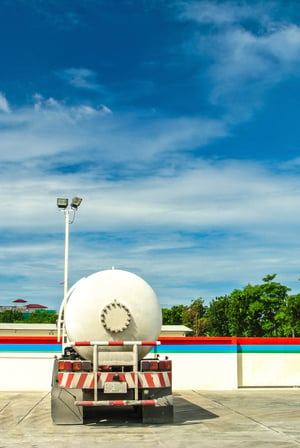 Investing in the right safety equipment is always a best practice. You want to mitigate the risk of injury or death for your customers and employees in a safer environment. But even months of planning and the best fall prevention systems may fail to address a critical safety component – the human element.
Investing in the right safety equipment is always a best practice. You want to mitigate the risk of injury or death for your customers and employees in a safer environment. But even months of planning and the best fall prevention systems may fail to address a critical safety component – the human element.
Falls that cause serious injuries or even death are a vital reminder of the risk involved with loading trucks and the importance of safety.
In the daily rush, it may be difficult for drivers and facility managers to imagine that such a tragic accident could happen. What is far more likely to be at the top of a driver’s mind each day is making a living – it’s human nature that drivers are going to look for workarounds to speed up the loading process and increase throughput.
For facilities that are looking to safeguard their employees and their customers, here are some key tips to keep in mind.
Parking Is The First And Most Important Step
If a driver does not first park in the exact loading spot, he is more apt to raise the safety cage if necessary to open the hatch rather than to re-park. Such shortcuts negate the benefits of your safety system. For the equipment to work as designed, the truck needs to park in the same spot every time. But not all trucks are the same.
8 Truck Spotting Options
Considering the variability of trucks and your facility, no one option is universally the right one. There are several truck spotting methods, though you’re still relying on the expertise of the driver and his familiarity with his truck. Here are some great ideas to take the variability out of truck spotting:
- Paint a line on the concrete to show the proper parking alignment.
- Use pipe bollards to block off each parking spot.
- Build a wall to keep trucks at a proper distance from the platform.
- Use guide rails like those used at a car wash to keep a truck’s tires in line and at a proper distance from the platform.
- Use laser signals to identify when a truck is in position.
- Install video cameras that show drivers their position relative to your platform.
- Station a facility employee on the platform to make it more efficient for drivers to re-park if needed.
- Leverage the OSHA Hierarchy of Hazard Controls to identify and eliminate additional potential risks.
Ramifications Of Improper Truck Spotting
It goes without saying that injuries or death caused by falls are the most serious ramification of faulty parking. But it’s also important to note that there are other less serious, but still significant, issues that improper truck spotting causes.
Mining Safety and Health Administration (MSHA) inspectors issue citations, levy fines of varying amounts and have the authority to shut down your equipment if it does not meet safety standards. And while workarounds are often created, these subpar solutions slow down the loading process and increase the cost of doing business. As you’re well aware, slow processes equate to unhappy customers and, eventually, the loss of your best customers.
Fortify your facility with a truck spotting system and best practices to keep your customers safer while also safeguarding your business.
Do your safety standards truly protect workers? Learn how to promote efficiency and OSHA compliance at your facility.




